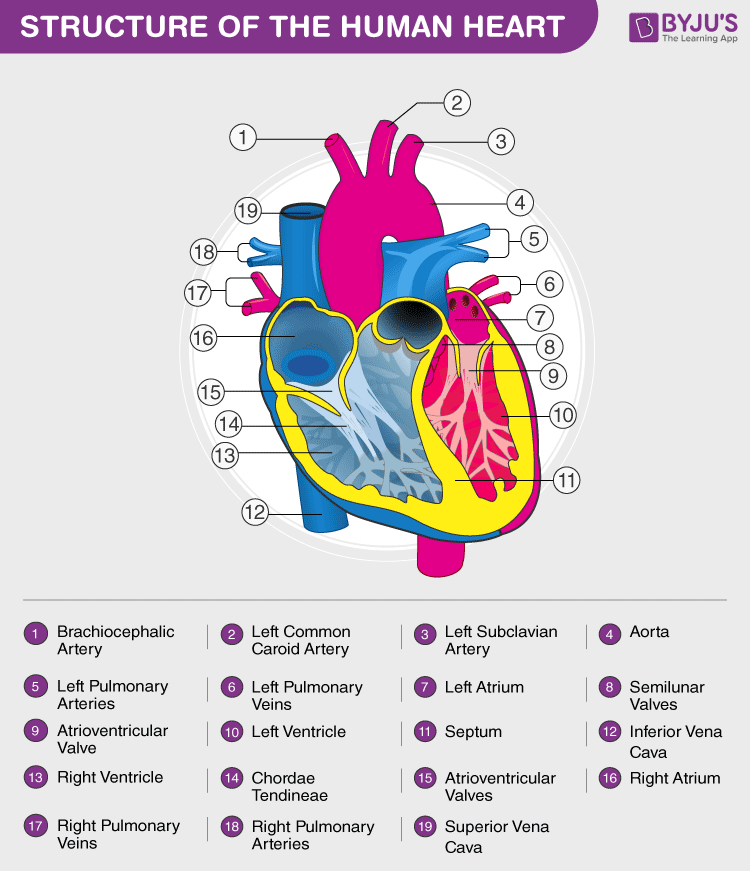The human heart is the most crucial organ of the human body. It pumps blood from the heart to different parts of the body and back to the heart. The most common heart attack symptoms or warning signs are chest pain, breathlessness, nausea, sweating etc.
The diagram of heart is beneficial for Class 10 and 12 and is frequently asked in the examinations. A detailed explanation of the heart along with a well-labelled diagram is given for reference.
Well-Labelled Diagram of Heart

- The heart is made up of four chambers:
- The upper two chambers of the heart are called auricles.
- The lower two chambers of the heart are called ventricles.
- The heart wall is made up of three layers:
- The outer layer of the heart wall is called epicardium.
- The middle layer of the heart wall is called myocardium.
- The inner layer of the heart wall is called endocardium.
- The heart consists of four valves:
- The aortic valve that prevents the backflow of blood when it is pumped from left ventricle to aorta.
- The mitral valve that prevents the backflow of blood when pumped from left atrium to left ventricle.
- The pulmonary valve that prevents backflow of blood when it flows from the right ventricle to the pulmonary artery.
- The tricuspid valve that prevents backflow of blood when it is pumped from the right atrium to right ventricle.
- The arteries carry the blood rich in oxygen from the heart to different parts of the body. The pulmonary artery, being an exception, carries deoxygenated blood to the lungs for purification.
- The veins carry impure blood from different parts of the body to the heart for oxygenation. However, the pulmonary vein carries oxygenated blood to the heart.
For facts about heart and more information on the diagram of heart, keep visiting BYJU’S website.
Related articles on human heart:
Very nice site
I wrote these answers in exam and I got 7 full marks thank you byju’s
Very nice answer in byjus
For exam paper